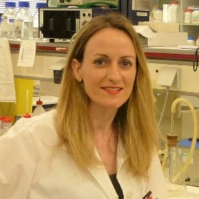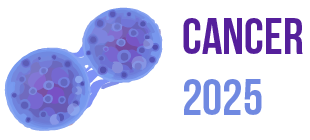Cancer 2025

University of Crete, Greece
Abstract:
Chromatin bridges are DNA strings that link
anaphase poles or daughter nuclei and are associated with carcinogenesis. DNA
bridges occur from the separation of twisted, linked chromatin that is caused
by problems in DNA replication or incomplete DNA decatenation. In response to
chromatin bridges, cells delay abscission by activating the abscission
checkpoint which delays completion of cytokinesis in order to prevent chromatin
breakage or tetraploidization by furrow regression. Here, we show that
spontaneous or replication stress-induced chromatin bridges derived from
catenated DNA exhibit “knots” of tangled, overtwisted DNA next to the midbody.
Topoisomerase IIα (Top2a), an enzyme that relaxes supercoils and untangles
catenated DNA forms irreversible Top2-DNA cleavage complexes (Top2ccs) on DNA
knots. Inhibition of Top2a results in diminished localization of Rad17, MRN,
ATM, Chk2 and CPC complex to the DNA bridges and induces chromatin bridge
breakage. Furthermore, proteolytic degradation of Top2ccs is required for
localization of Rad17 to the bridge DNA. In turn, Rad17 promotes recruitment of
the MRN complex to DNA knots and downstream abscission checkpoint signaling to
delay abscission and prevent chromatin bridge breakage in cytokinesis. In
contrast, chromatin bridges generated by dicentric chromosomes do not exhibit
DNA knots or Top2ccs next to the midbody, and fail to recruit Top2a, Rad17 and
other downstream proteins and are unable to induce an abscission delay. Our
results describe a novel mechanism by which the abscission checkpoint detects
chromatin bridges in human cells, through generation of irreversible Top2ccs on
DNA knots. Because chromosomal instability is a major cause of cancer,
identifying new genes that protect genome integrity is very important for
cancer research.
Biography:
Dr Eleni Petsalaki is a Post Docroral Research
Scientist in Dr George Zachos’ lab at University of Crete, Greece. She completed her PhD in 2014 in Molecular
Biology and Biomedicine at the Department of Biology. Her main interest is mitotic cell division
and mechanisms that monitor mitotic progression called the mitotic spindle
checkpoint and the abscission checkpoint.
She is an author of 16 publications including Journal of Cell Biology,
Nature Communications, Journal of Cell Science and others. Her publications
have received 305 citations so far. She is currently a member of FEBS, AACR, and Royal Society of Biology.
